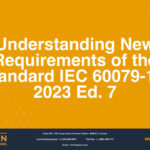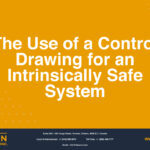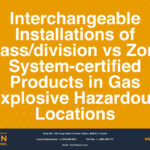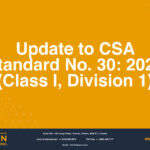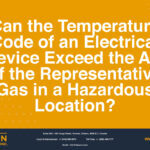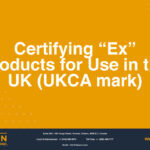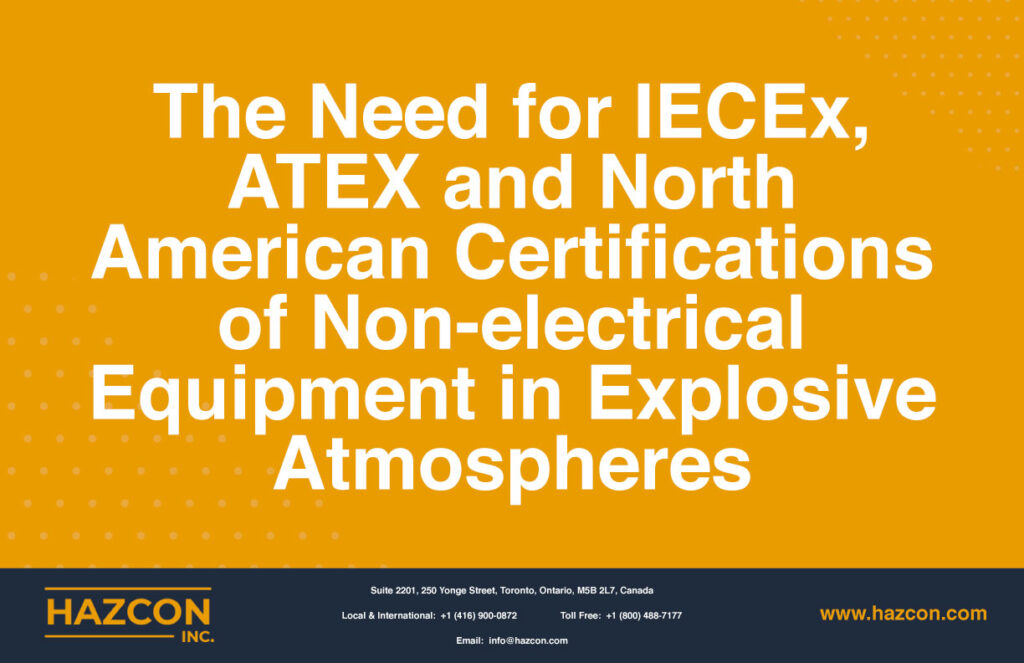
The Need for IECEx, ATEX and North American Certifications of Non-electrical Equipment in Explosive Atmospheres
It is well known that electrical equipment that is to be installed where there is a source of ignition or risk of explosion must comply with relevant standards and achieve the corresponding, Certificate of Compliance (CofC) in order to ensure safety. Non-electrical equipment in those hazardous environments may also be sources of ignition or explosion as a result of sparks and hot surfaces. Non-electrical equipment that is mechanical in nature is commonly used in hazardous locations. Sparks and hot surfaces may result from the moving parts of such mechanical equipment as a result of:
- Mechanical failure (bearings overheating, for example)
- Elevated temperatures even during normal operation as a result of friction (e.g., on hot brake surfaces)
Certifications of non-electrical equipment to be used in hazardous environments are required within international (IECEx)and European (ATEX) certification schemes. Although North America has yet to introduce such a certification, it is likely to do the same in the future.
Non-electrical Equipment IECEx Certification Requirements
Standards ISO/ IEC 80079-36 and IEC/ ISO 80079-37 address the basic requirements and protection concepts for mechanical explosion-protected equipment on an international level.
Two steps are involved in achieving compliance with these standards. The first step is a comprehensive ignition hazard assessment to identify all potential ignition sources (to determine if they can become effective ignition sources during the expected lifetime of the mechanical equipment). The second step is to assign protective measures, depending on the required Equipment Protection Level (EPL), to minimize the probability that these ignition sources will become effective.
Three protection techniques are indicated in the standard ISO/IEC 80079-37, which specify the design and construction requirements of nonelectrical equipment intended for use in explosive atmospheres:
- Protection by construction safety “c”
- Protection by control of ignition source “b”
- Protection by liquid Immersion “k”
Non-electrical products that are found to be in compliance will result in an “Ex h” marking on the equipment and its certificate. It should be noted that the type of protection used for non-electrical equipment based on ISO 80079-37 applied to the equipment cannot be recognized from the Ex-marking code “h” alone. For example, for a piece of mechanical equipment intended to be used for the gas group Hydrogen in Zone 1, the full marking will be: Ex h IIB + H2 T6 Gb.
Non-electrical Equipment ATEX Certification
In accordance with ATEX Directive 2014/34/EU, both electrical and non-electrical equipment intended for use in explosive atmospheres having a potential source of ignition must comply with the Essential Health and Safety Requirements (EHSR). The EN 13463 series of standards previously covered all the requirements for non-electrical such as machinery, conveyor systems and air pumps for use in explosive atmospheres. A new edition of these standards (EN 80079-36 and EN 80079-37) is the current standard that specifies the requirements for conformity.
Note that Category 2 and Category 3 non-electrical products that have a potential source of ignition do not need to have an EU Type Certificate. However, manufacturers are obligated to perform a comprehensive ignition hazard assessment to identify all potential ignition sources and assign protective measures, depending on the required Equipment Protection Level (EPL), to minimize the probability that these ignition sources will become effective.
Non-electrical North America Certification Requirements
As of the time of this writing, “non-electrical“ source of ignition is relatively new on the certification scene and is not required in North America.
It is not easy to ignore the risk of explosion due to the potential source of ignition as a result of mechanical equipment, however, but at the present time, it seems there is only a major guidance for non-electrical equipment protection in North America and there are no required markings. CSA recently adopted the standard IEC 80079-36 and IEC 80079-37 for Canada, but the use of “Ex h” marking has not been introduced into the CEC (Canadian Electrical Code). No doubt, certification of non-electrical equipment will be required in North America in the foreseeable future.
Request a Consultation
Complete the form below to get started.

